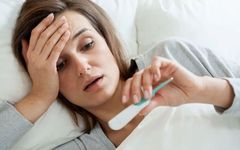Traditional Chinese Medicine (TCM) experts share health knowledge with you.
Click below to follow for free ↓↓↓
After the beginning of winter, the temperature difference between morning and evening is significant, making it easy to catch a wind-cold cold. However, wind-cold colds do not last long and usually quickly transform from the exterior to the interior, turning into a wind-heat cold. Symptoms include: noticeable body heat, slight aversion to wind, sweating that is not easily produced, dry throat, red and swollen sore throat, nasal congestion, yellow and turbid nasal discharge, sometimes accompanied by a headache, cough, sticky or yellow phlegm, thirst, thin white and slightly yellow tongue coating, and red tip and edges of the tongue.

In TCM, the treatment for wind-heat cold employs the method of “dispersing wind-heat and using acrid-cool herbs to release the exterior.” The commonly seen TCM patent medicines in pharmacies mainly include seven types: Sang Ju Gan Mao Pian (Sang Ju Cold Tablets), Yin Qiao Jie Du Pian (Yin Qiao Detox Tablets), Lan Qin Kou Fu Ye (Lan Qin Oral Liquid), Shuang Huang Lian Ke Li (Shuang Huang Lian Granules), Chai Huang Ke Li (Chai Huang Granules), Ling Qiao Jie Du Wan (Ling Qiao Detox Pills), and Lian Hua Qing Wen Jiao Nang (Lian Hua Qing Wen Capsules).
1. Sang Ju Gan Mao Pian (Sang Ju Cold Tablets)

Mainly contains Sang Ye (Mulberry Leaf), Ju Hua (Chrysanthemum), Lian Qiao (Forsythia), Bo He (Peppermint), Ku Xing Ren (Bitter Apricot Seed), Jie Geng (Platycodon), Gan Cao (Licorice), and Lu Gen (Reed Rhizome). In this formula, Sang Ye and Ju Hua are acrid-cool and clear, dispersing wind and clearing heat, releasing the exterior and dispelling pathogens; Bo He disperses wind-heat, while Ku Xing Ren and Jie Geng descend lung qi, transform phlegm, and stop cough; Lian Qiao clears the heart and drains heat, and Lu Gen clears heat and generates fluids to quench thirst; Sheng Gan Cao clears heat and detoxifies, harmonizing the formula and working with Jie Geng to clear and benefit the throat. The combined effects of these herbs are to disperse wind and clear heat, and to relieve cough. It is mainly used for the initial stage of wind-heat cold, with symptoms of headache, cough, dry mouth, and sore throat.
2. Yin Qiao Jie Du Pian (Yin Qiao Detox Tablets)
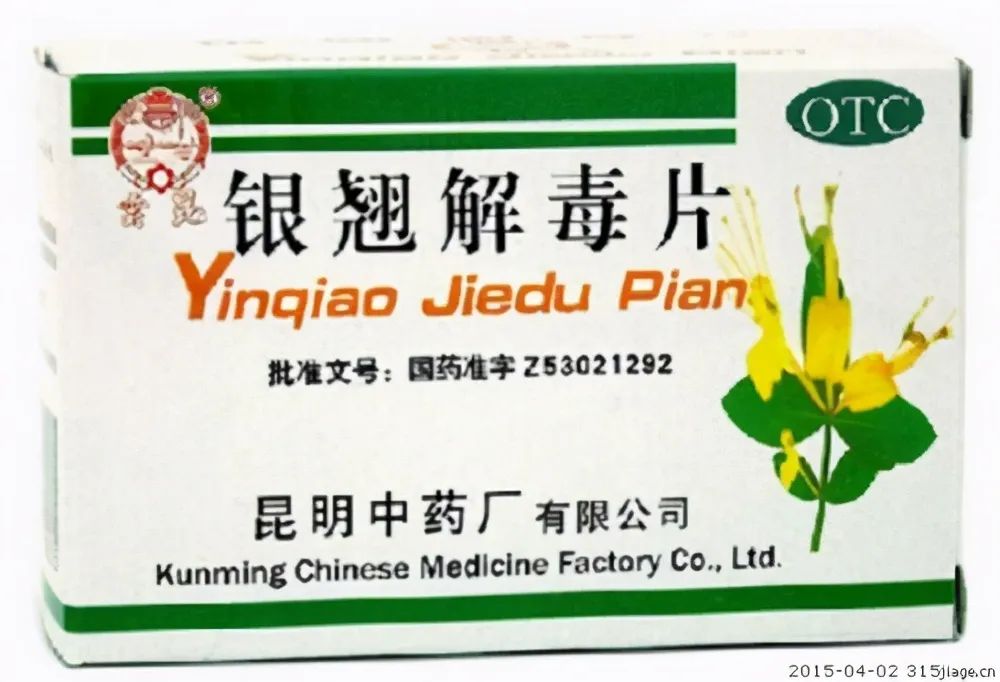
Mainly contains Jin Yin Hua (Honeysuckle), Lian Qiao (Forsythia), Bo He (Peppermint), Jing Jie (Schizonepeta), Dan Dou Chi (Fermented Soybean), Niu Bang Zi (Burdock Seed, roasted), Jie Geng (Platycodon), Dan Zhu Ye (Lophatherum), and Gan Cao (Licorice). In this formula, Jin Yin Hua and Lian Qiao are the chief herbs, having the functions of acrid-cool exterior-releasing and heat-clearing detoxification, while also possessing aromatic properties to dispel turbidity. They address the characteristics of warm-heat pathogens often accompanied by turbid qi while dispersing the exterior. Bo He and Niu Bang Zi are acrid and cool, dispersing wind-heat and clearing the head, and can detoxify and benefit the throat; Jing Jie and Dan Dou Chi are acrid and slightly warm, assisting the chief herbs in dispersing exterior pathogens and releasing heat outward. Although these two are acrid and warm, they are not harsh and can enhance the dispersing power of the acrid-cool herbs when combined. Zhu Ye clears heat from the upper jiao, and Jie Geng clears the lungs and stops cough, serving as assistant herbs. Gan Cao harmonizes the formula, protects the stomach, and can also harmonize with Jie Geng to clear and benefit the throat. The combined effects of these herbs are to release the exterior, clear heat, and detoxify. It is mainly used for wind-heat cold, with symptoms of fever, headache, cough, dry mouth, and sore throat.
3. Lan Qin Kou Fu Ye (Lan Qin Oral Liquid)
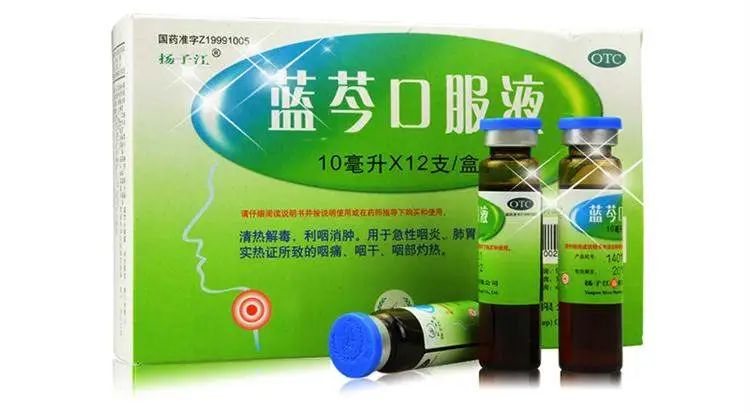
Mainly contains Ban Lan Gen (Isatis Root), Huang Qin (Scutellaria), Zhi Zi (Gardenia), Huang Bai (Phellodendron), and Pang Da Hai (Sterculia). It has the effects of clearing heat and detoxifying, benefiting the throat and reducing swelling. It is mainly used for acute pharyngitis and sore throat caused by lung and stomach heat.
4. Shuang Huang Lian Ke Li (Shuang Huang Lian Granules)
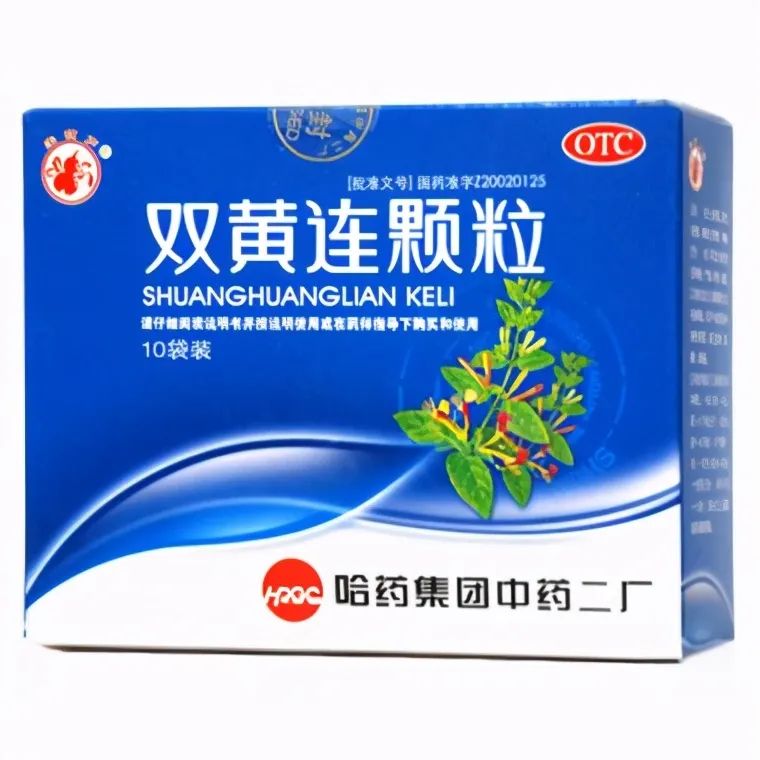
Mainly contains Jin Yin Hua (Honeysuckle), Huang Qin (Scutellaria), and Lian Qiao (Forsythia). The excipients are sucrose, dextrin, and β-cyclodextrin. In this formula, Jin Yin Hua and Lian Qiao can disperse wind-heat to release the exterior, and also clear heat and detoxify to benefit the throat; Huang Qin, being bitter and cold, clears lung fire and the excess heat of the upper jiao to stop cough. The three herbs work together to release the exterior, clear heat, and detoxify. The combined effects of these herbs are to disperse wind, release the exterior, and clear heat and detoxify. It is mainly used for colds caused by external wind-heat, with symptoms of fever, cough, and sore throat.
5. Chai Huang Ke Li (Chai Huang Granules)
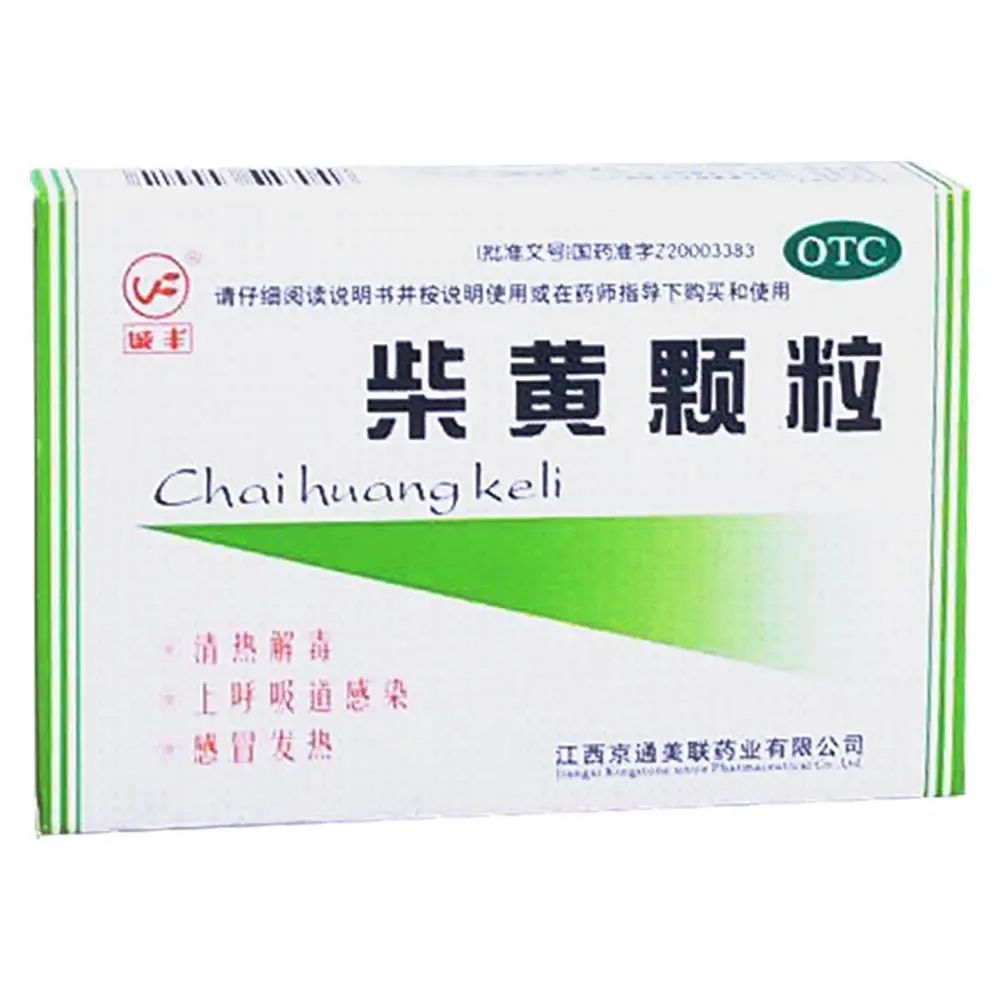
Mainly contains Chai Hu (Bupleurum) and Huang Qin (Scutellaria) extract. It has the effect of clearing heat and detoxifying. It is mainly used for upper respiratory infections and colds with fever.
6. Ling Qiao Jie Du Wan (Ling Qiao Detox Pills)
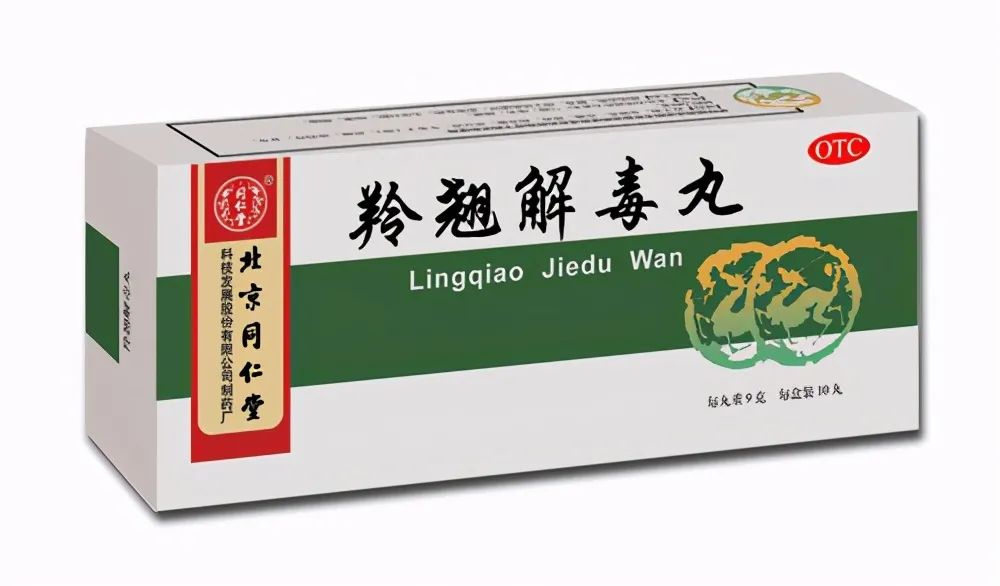
Mainly contains Ling Yang Jiao (Antelope Horn), Jin Yin Hua (Honeysuckle), Lian Qiao (Forsythia), Bo He (Peppermint), Jing Jie (Schizonepeta), Dan Dou Chi (Fermented Soybean), Niu Bang Zi (Burdock Seed, roasted), Jie Geng (Platycodon), Chi Shao (Red Peony), Dan Zhu Ye (Lophatherum), and Gan Cao (Licorice). It has the effects of dispersing wind, clearing heat, and detoxifying. It is mainly used for wind-heat cold, with symptoms of chills and fever, dizziness, cough, and sore throat.
7. Lian Hua Qing Wen Jiao Nang (Lian Hua Qing Wen Capsules)
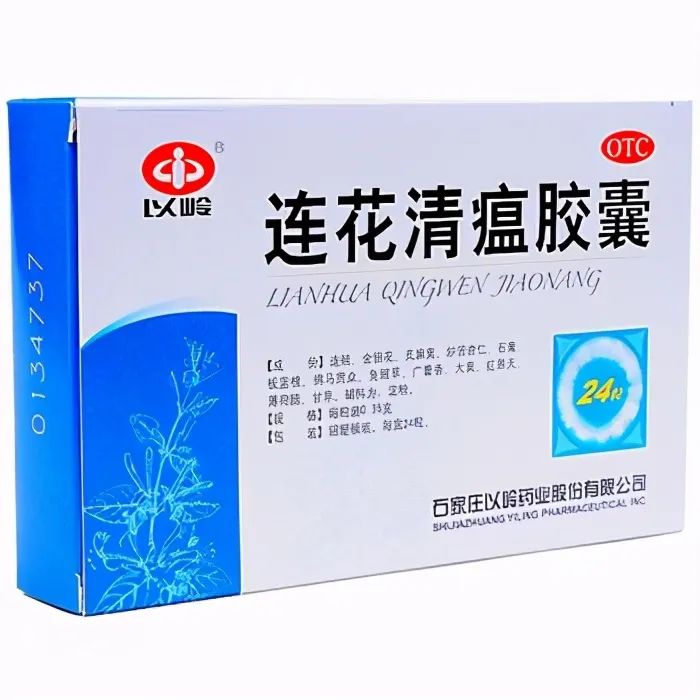
Mainly contains Lian Qiao (Forsythia), Jin Yin Hua (Honeysuckle), Zhi Ma Huang (Prepared Ephedra), Chao Ku Xing Ren (Roasted Bitter Apricot Seed), Shi Gao (Gypsum), Ban Lan Gen (Isatis Root), Mian Ma Guan Zhong (Lysimachia), Yu Xing Cao (Houttuynia), Guang Huo Xiang (Patchouli), Da Huang (Rhubarb), Hong Jing Tian (Rhodiola), Bo He (Peppermint), and Gan Cao (Licorice). It has the effects of clearing epidemic toxins and detoxifying, as well as dispersing lung heat. It is mainly used for treating influenza with heat toxin attacking the lungs, with symptoms of fever or high fever, chills, muscle aches, nasal congestion, runny nose, cough, headache, dry throat, red tongue, and yellow or greasy coating.
Note: Some text and image resources in this article are sourced from the internet. The purpose of reposting this article is to convey more information. If there are any errors in source attribution or infringement of your legal rights, please leave a message in the background to notify us. If the situation is true, we will delete it immediately and apologize to you.
Previous highlights:
What TCM medicines to take for women who are sensitive to cold.
This TCM medicine nourishes the spleen, nourishes blood, calms the mind, and treats insomnia and loss of appetite.
Six TCM medicines that can be used during the recovery period of cerebral hemorrhage to improve nerve function.
Director Zhao shares health and wellness knowledge.
Click below to follow for free ↓↓↓
Editor shares good articles with friends.
1. So precious! Over 800 folk remedies, there is no disease that cannot be treated, save for future use!
2. Long-term use of Atorvastatin and Aspirin can lead to four situations; stop taking them in time, do not take chances.
3. Nine effective insomnia remedies, the best medicine for sleep disorders.
Like is a form of encouragement Share to spread joy.

